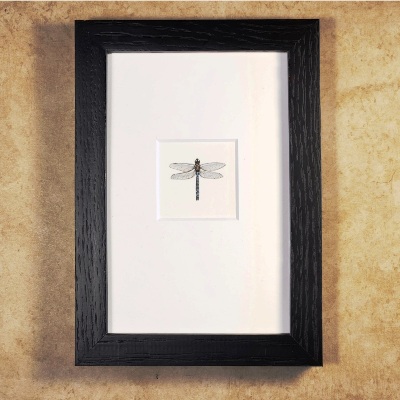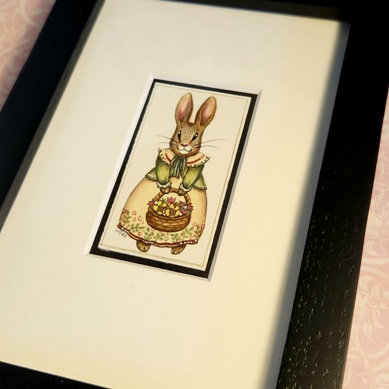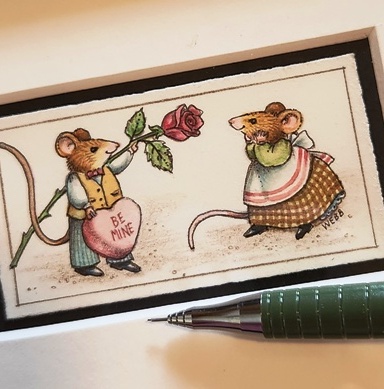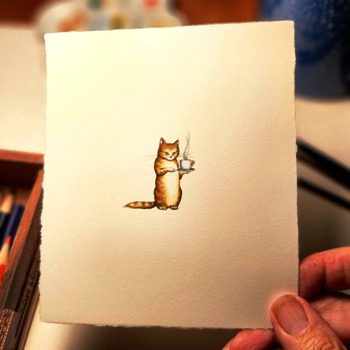Have you signed up yet?
26 Friday Apr 2024
Posted in Uncategorized
26 Friday Apr 2024
Posted in Uncategorized
11 Thursday Apr 2024
Posted in Uncategorized

Native plant folklore meets the golden age of children’s book illustration – all levels of art experience welcome. This course is designed to make you smile.
Storybook Botanicals in Watercolor & Colored Pencil
6 Lessons – Videos + Illustrated Printables
Limited Enrollment – Lifetime Access $65
This lighthearted course will launch April 29, combining hand lettering, gentle botanical drawing and storybook illustration in a guided, step-by-step process designed for all levels of art experience. Using a simple three-step technique for adding details on top of color, we’ll create cozy and whimsical botanical images for old-fashioned plants including rabbit tobacco, foxglove and catnip. (Along the way, we’ll also explore some botanical facts and folklore.)
Storybook Botanicals will be six full-length video classes, divided into two modules and housed on a password-protected website. Each video lesson is approximately one hour long, with its own illustrated printable pages.
Module 1:
Module 2:
This is a lifetime course and you may work at your own pace. Questions or comments? Email me at studio@valwebb.com
Here is the supply list:
Click to access storybook-supply-list.pdf


24 Sunday Mar 2024
Posted in Uncategorized



I added three framed originals (and a limited edition print series for the Brown Trout) to my shop site verytinystudio.com today. This is such a busy season – working on Master Naturalist certification, planting my little garden patch, preparing the new Storybook Botanicals course – that it feels good to finish some new tiny art. 🙂
11 Monday Mar 2024
Posted in Uncategorized

Storybook Botanicals in Watercolor & Colored Pencil
6 Lessons – Videos + Illustrated Printables
Limited Enrollment – Lifetime Access $65
This lighthearted course will launch April 29, combining hand lettering, gentle botanical drawing and storybook illustration in a guided, step-by-step process designed for all levels of art experience. Using a simple three-step technique for adding details on top of color, we’ll create cozy and whimsical botanical images for old-fashioned plants including rabbit tobacco, foxglove and catnip. (Along the way, we’ll also explore some botanical facts and folklore.)
Storybook Botanicals will be six full-length video classes, divided into two modules and housed on a password-protected website. Each video lesson is approximately one hour long, with its own illustrated printable pages.
Module 1:
Module 2:
This is a lifetime course and you may work at your own pace. Questions or comments? Email me at studio@valwebb.com
Here is the supply list:
06 Wednesday Mar 2024
Posted in Uncategorized

New in my online shop this morning: a tiny watercolor bunny girl with a basket of wildflowers. See the listing (and more images) here: verytinystudio.com.
05 Tuesday Mar 2024
Posted in Uncategorized

Here’s the finished watercolor portrait:

This week, I had a wonderful commission request: a tiny portrait of Jerry, a gentle giant who works at Rainbow Therapeutic Riding Center in Virginia. Besides being extremely handsome, Jerry is quite tall – at 16.3 hands high, his back is higher than my head – and he was a foxhunter before coming to Rainbow. The folks at Rainbow told me he is a big teddy bear who loves children and will patiently pose for photo ops. His portrait will be used as part of a fundraiser to support the important work done at the riding center: lending independence and mobility to children and adults with disabilities, who may be otherwise restricted. Equine-assisted therapy has been proven to be beneficial for many people with cognitive, physical, emotional, or social challenges. I love Rainbow’s slogan: “Changing lives, one hoofbeat at a time.”
08 Thursday Feb 2024
Posted in Uncategorized

Flowers and candy: this mouse gentleman is doing his best to impress his Valentine. I painted the tiny couple on archival Arches watercolor paper, using watercolor and India ink. As always, I started with a foundation sketch in dark brown colored pencil. I love those warm undertones! The sketch looked like this:

Here’s the final, matted and framed mini painting:

27 Wednesday Dec 2023
Posted in Uncategorized

4 Winter Birds in Colored Pencil
5 Lessons – work at your own pace
LIFETIME ACCESS $40
Not all birds fly south for the winter. Some of our most beautiful (and beloved) native birds are hardy enough to survive the cold. Spotting them on a bleak midwinter’s day feels like a tiny spark of springtime.
Start your new year by drawing four lovely year-round residents: a black-capped chickadee on a chokecherry branch, tufted titmouse on pine bough, and two very different – but equally beautiful – northern cardinals. The male and female cardinal will each get their own lesson. There will also be a lesson devoted to drawing the spiral symmetry of pine cones.
Start this course anytime. As always, every lesson features a full-length demo video and a collection of beautifully illustrated printable pages. The course is hosted on a private, password-protected website and your access will never expire. Work at your own pace, with as much instructor feedback as you like.
All levels of art experience (or none at all) are warmly welcomed. And if you would prefer to focus only on colored pencil, not sketching, I also provide an optional preliminary drawing for each bird.
The supply list is quite simple:
SEE ALL 30 OF MY ONLINE ART COURSES
Questions? Just email me! studio@valwebb.com
19 Tuesday Dec 2023
Posted in Uncategorized

It’s nearly three years since I moved into my 10×30 tiny house – now my paintings have become tiny, too. Watercolors that measure just over 1×1 inch are perfect for working in a very small space. I love the challenge of working on art roughly the size of a large postage stamp. In the coming weeks, I will be building an inventory of originals and fine prints in my tiny art gallery. See them here
https://www.verytinystudio.com



04 Monday Dec 2023
Posted in Uncategorized